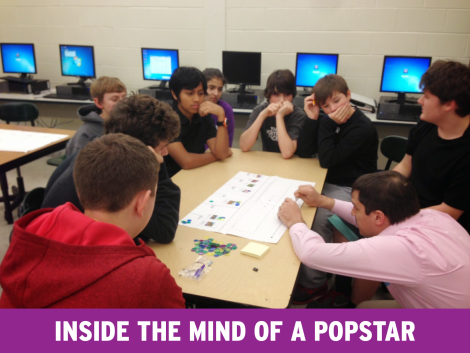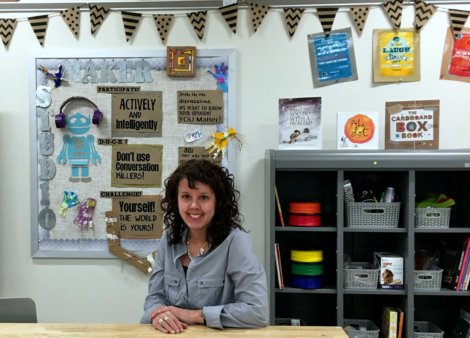
Guest Blogger Steve Isaacs Reflects on Playtesting Educational Games with Students
Posted by cemignano on
When creating features, educational games, and other projects at BrainPOP, we strive to incorporate the teacher and student voice in all parts of the process. Recently our User Testing Lead, Katya Hott (@katyamuses), went with Director of Product Scott Price and Game Designer Will Jordan-Cooley to two New Jersey middle schools to gather feedback from teachers and students on a new game prototype. The teachers who hosted us, Steve Isaacs (@mr_isaacs) and Matt Farber (@MatthewFarber), are both veteran educators who have a long history of using games in their classrooms. Check out Steve’s reflection on the process, and be sure to come back to the blog later this week when Matt shares his take on the playtesting experience.
For my students, this playtest session was a great opportunity as one of the key elements of my course is iterative design, the process of designing, beginning development, product testing, receiving feedback, and continuing development based on tester feedback. The visit from BrainPOP was incredibly valuable as it served as an authentic testing environment for BrainPOP and a model example for my students.
One class was my 8th grade video game design and development class. They worked with paper prototypes of the game. There were two variations of the prototype to test certain mechanics that BrainPOP is considering for the game. It was great to see students make comments playing one version that affirmed the value of the added mechanic of the other version. This whole exercise was especially valuable for me as a teacher and a learner. Prototyping is an important part of the design process. My students create design documents and sketches of levels, but rarely create and test games with a true paper prototype. It was great for me to see the process. Likewise, it was great for my students to experience and served as a natural springboard to discuss the process as it relates to their games.
My seventh grade game design and digital storytelling students played a digital version of the game. This group will be going through their first iteration of peer testing soon so it was great for them to experience the process and provide valuable feedback. There is no doubt that their experience with peer testing will be enhanced from having had this experience. Observing the students playing the games and commenting on the game mechanics, periodic glitches, etc. was great. I think they were able to understand the true value of their contribution.
Playtesting experiences like this one help both product developers and teachers and students learn. We learn how to make products that work well in classroom, and teachers and students learn to be valuable contributors to the design and development process. In fact, Steve and Katya facilitate a twitter community called #EdTechBridge that is all about bringing educational technology creators together with teachers to make better products for students. #EdTechBridge chat takes place on Twitter every Wednesday night at 7pm EST.














